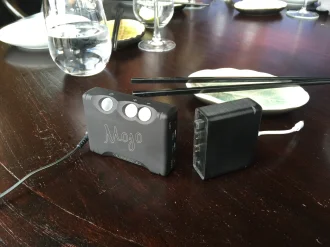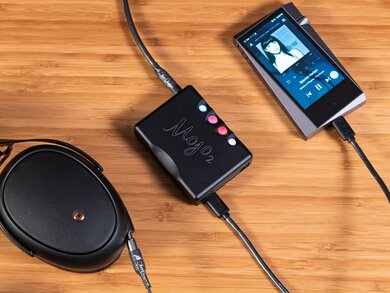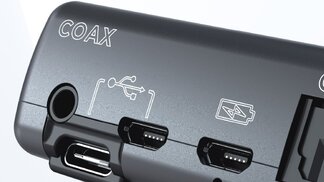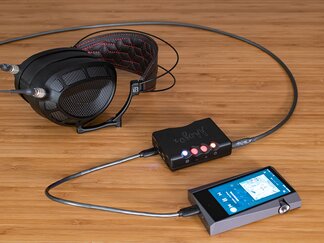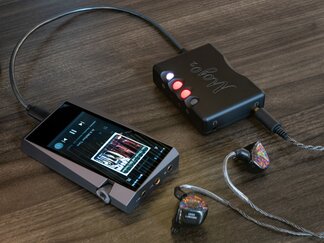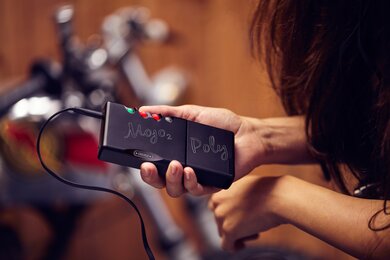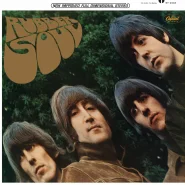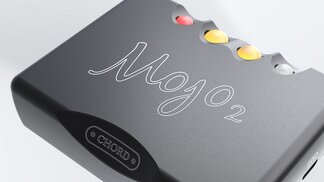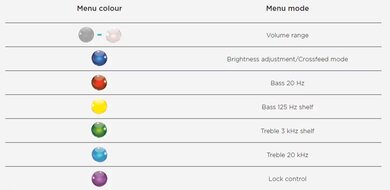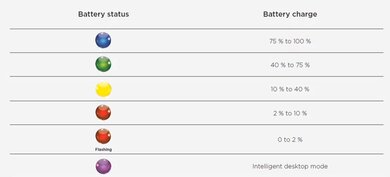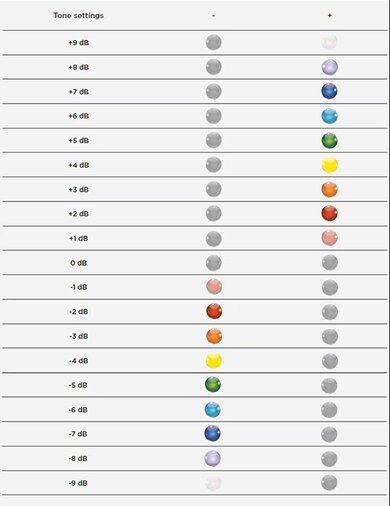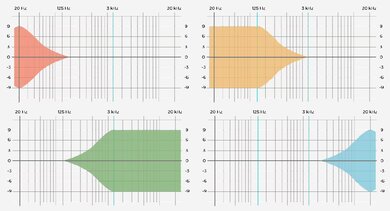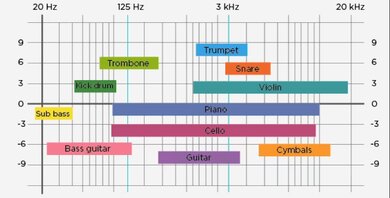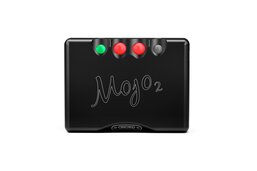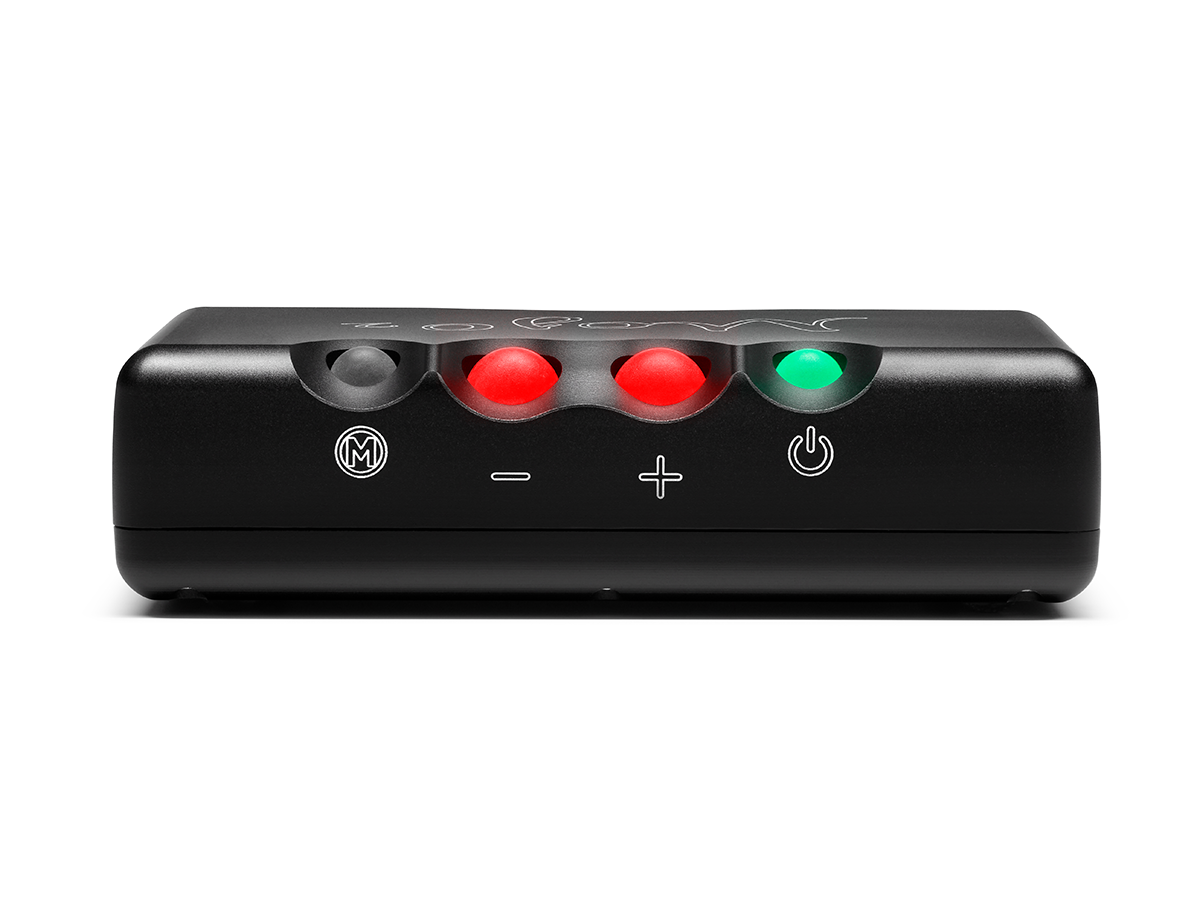
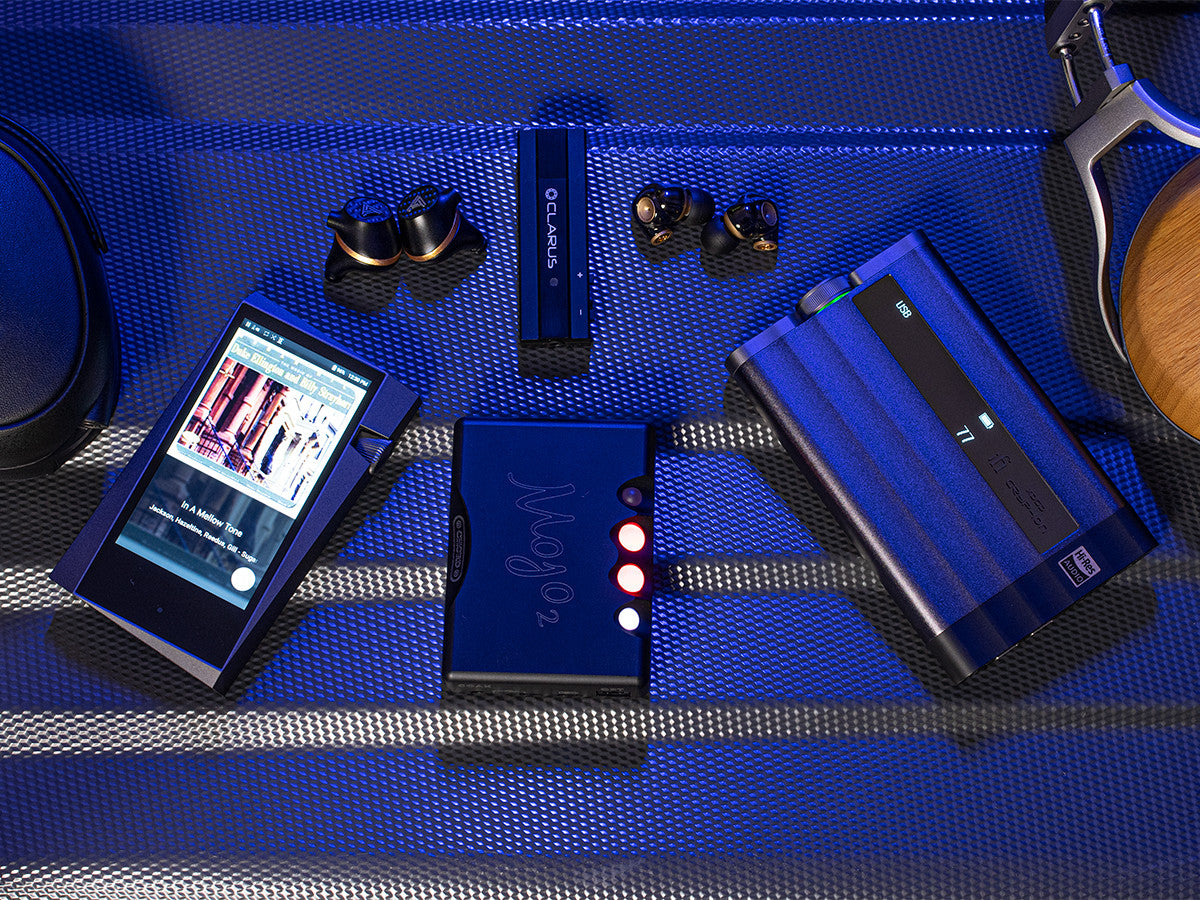
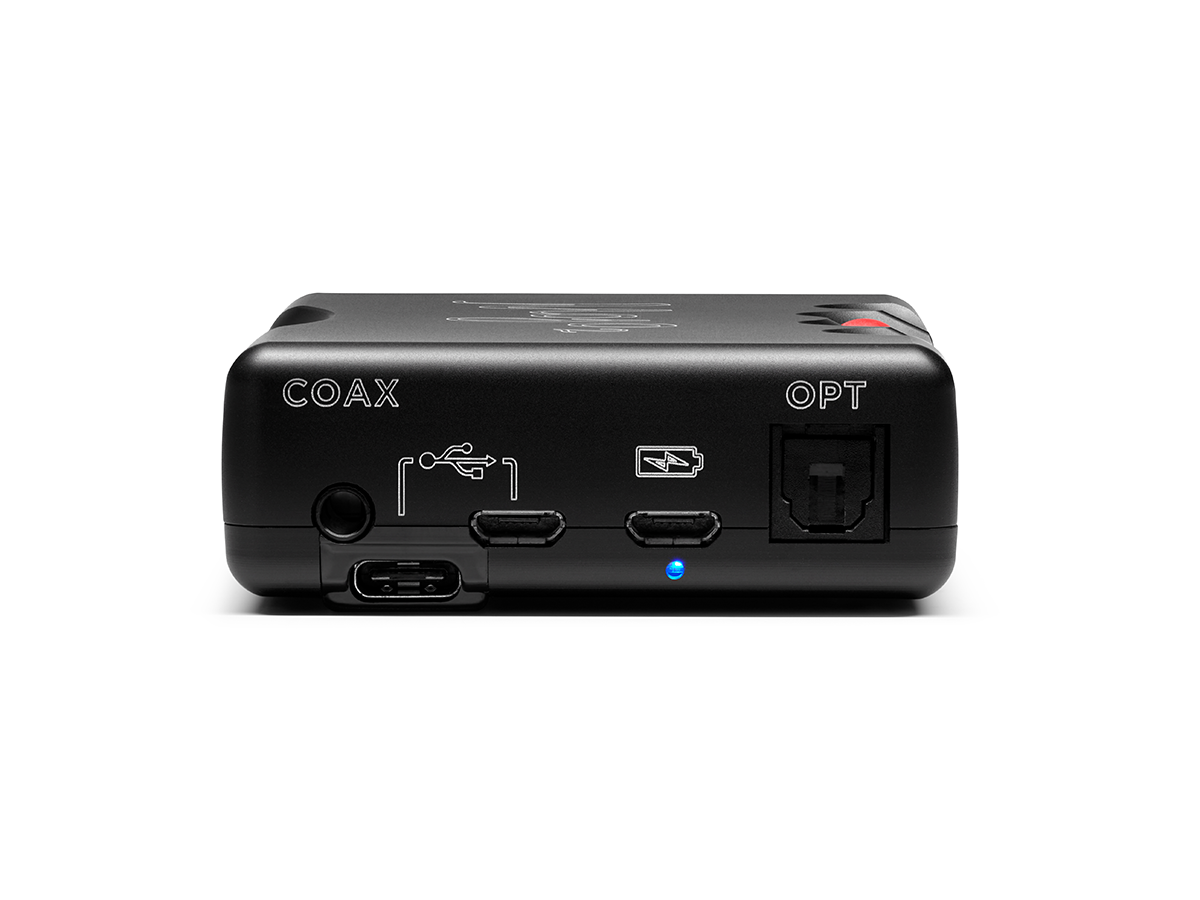
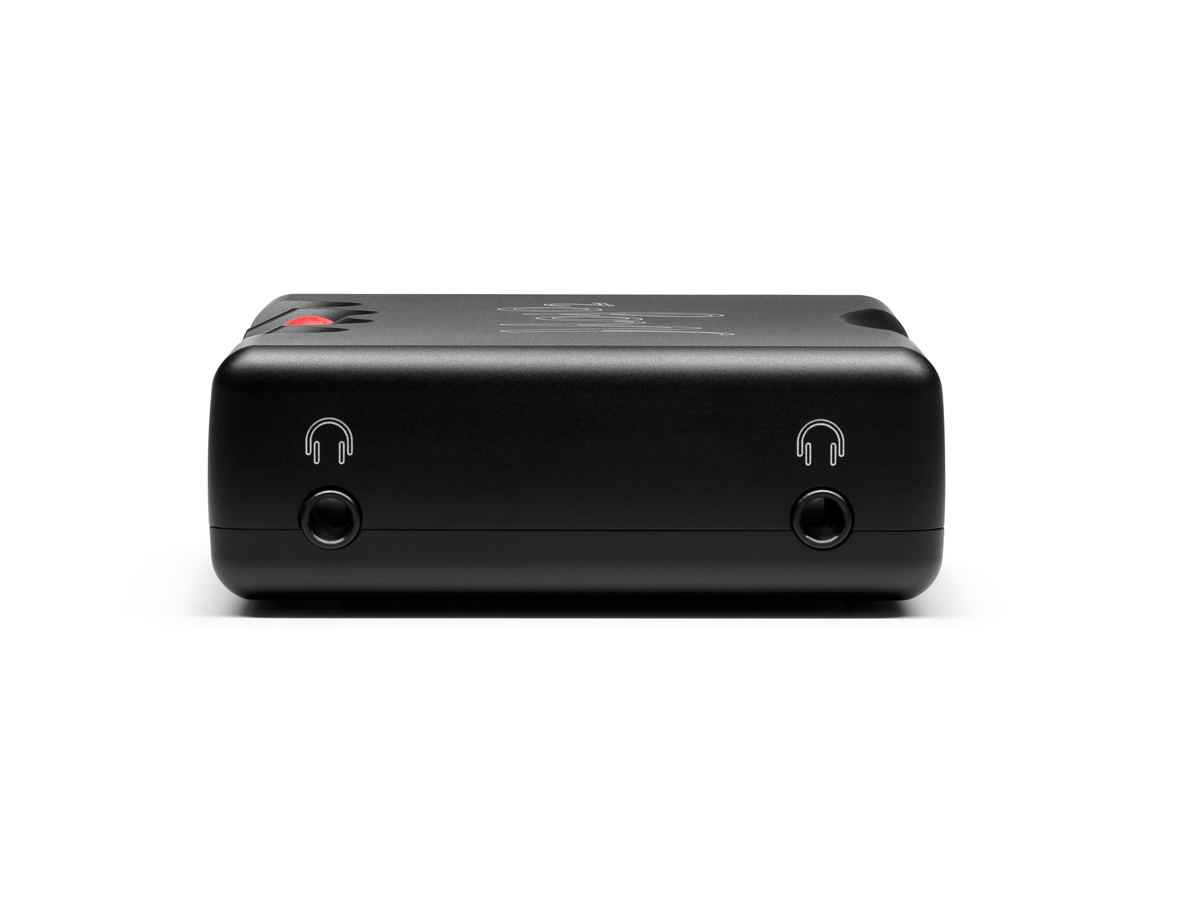
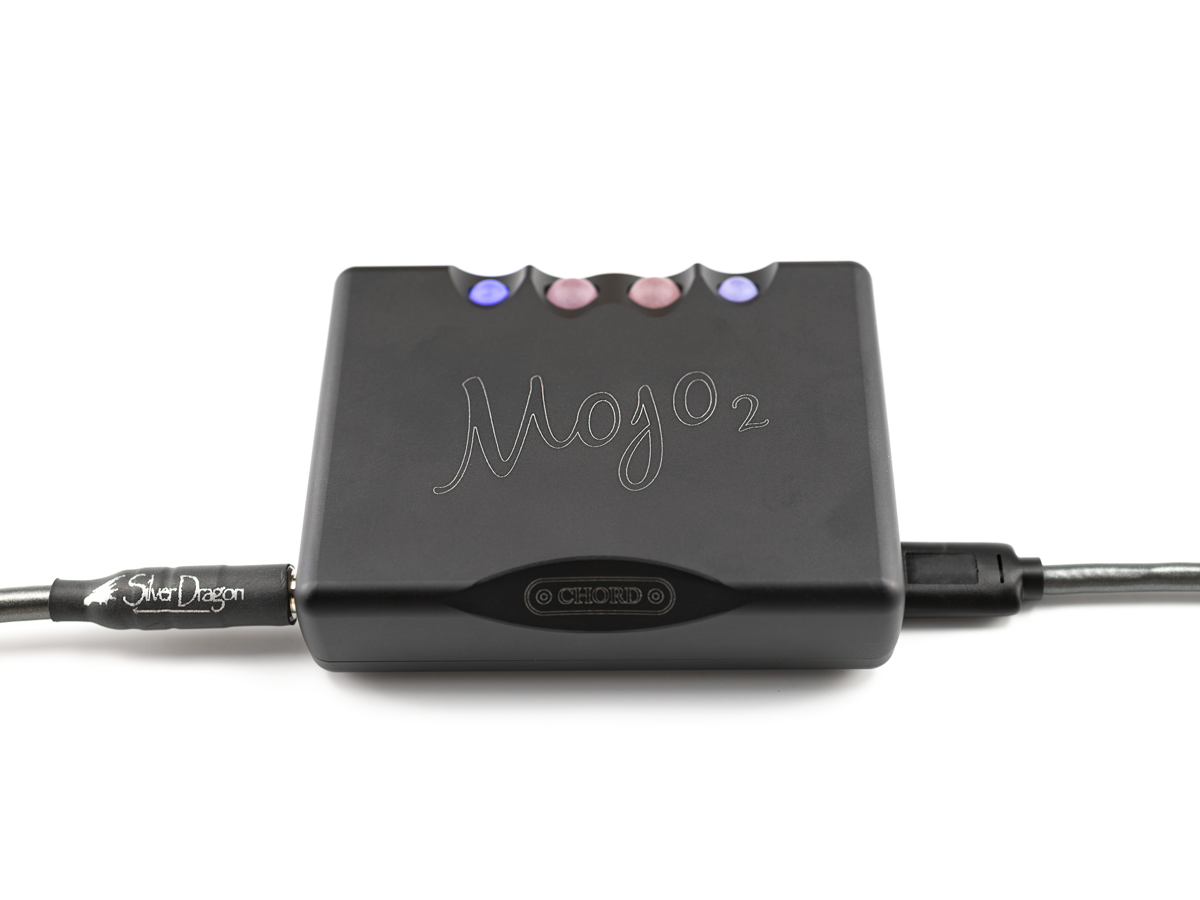
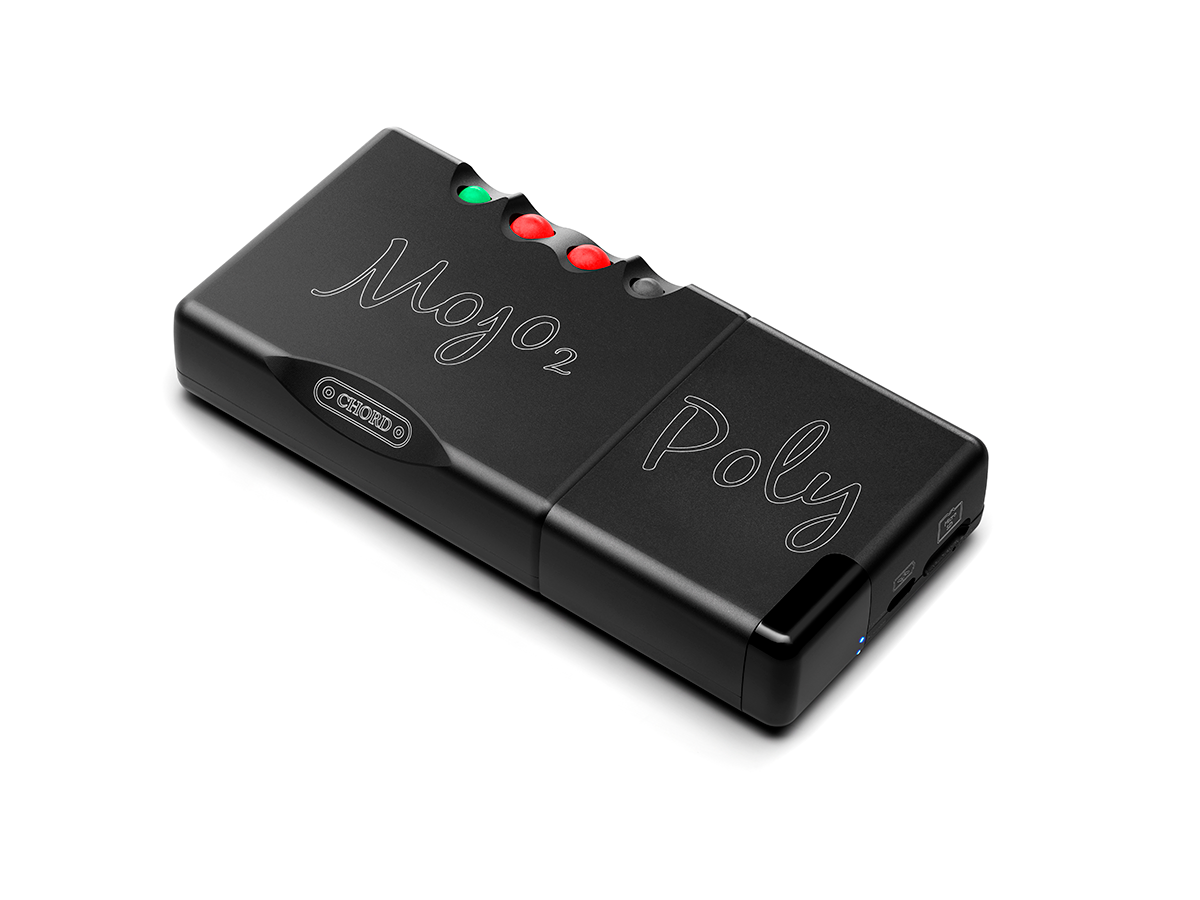
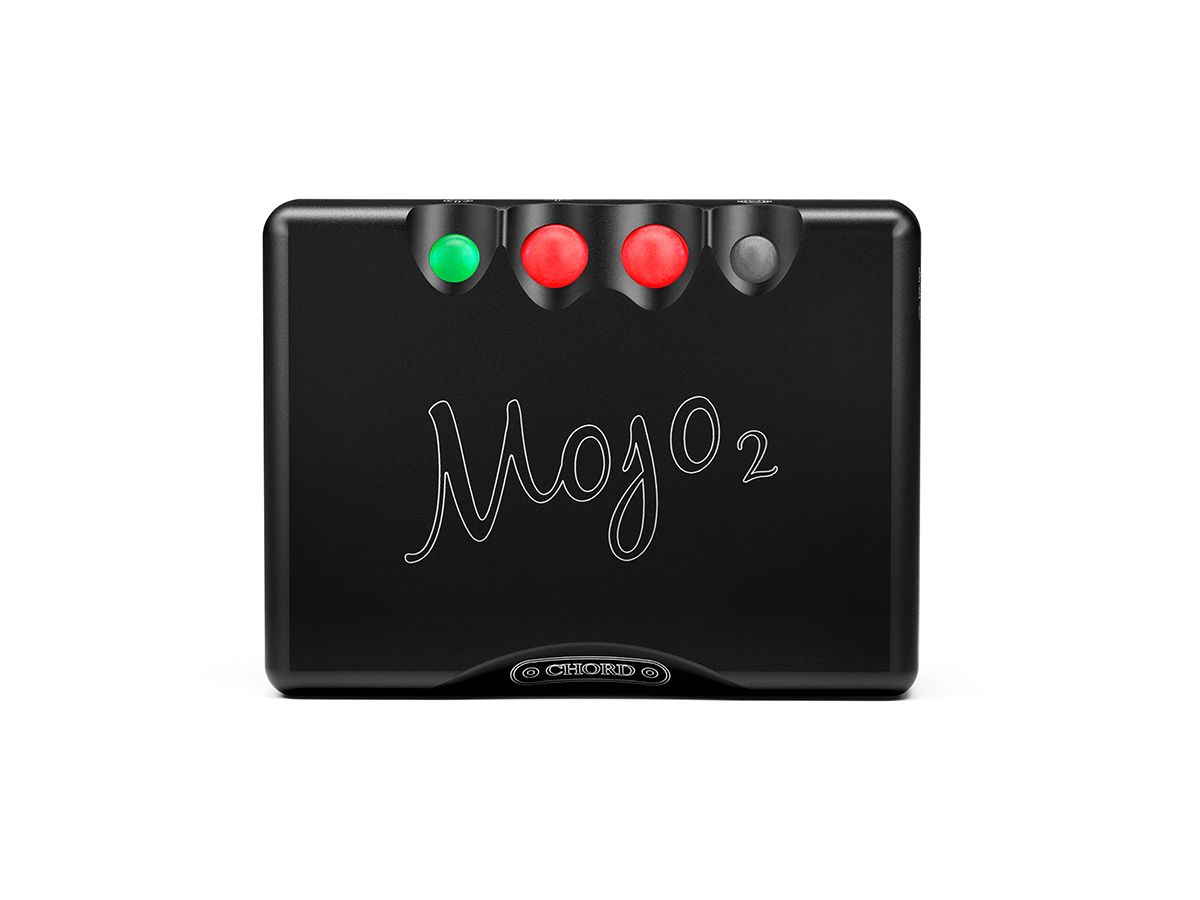
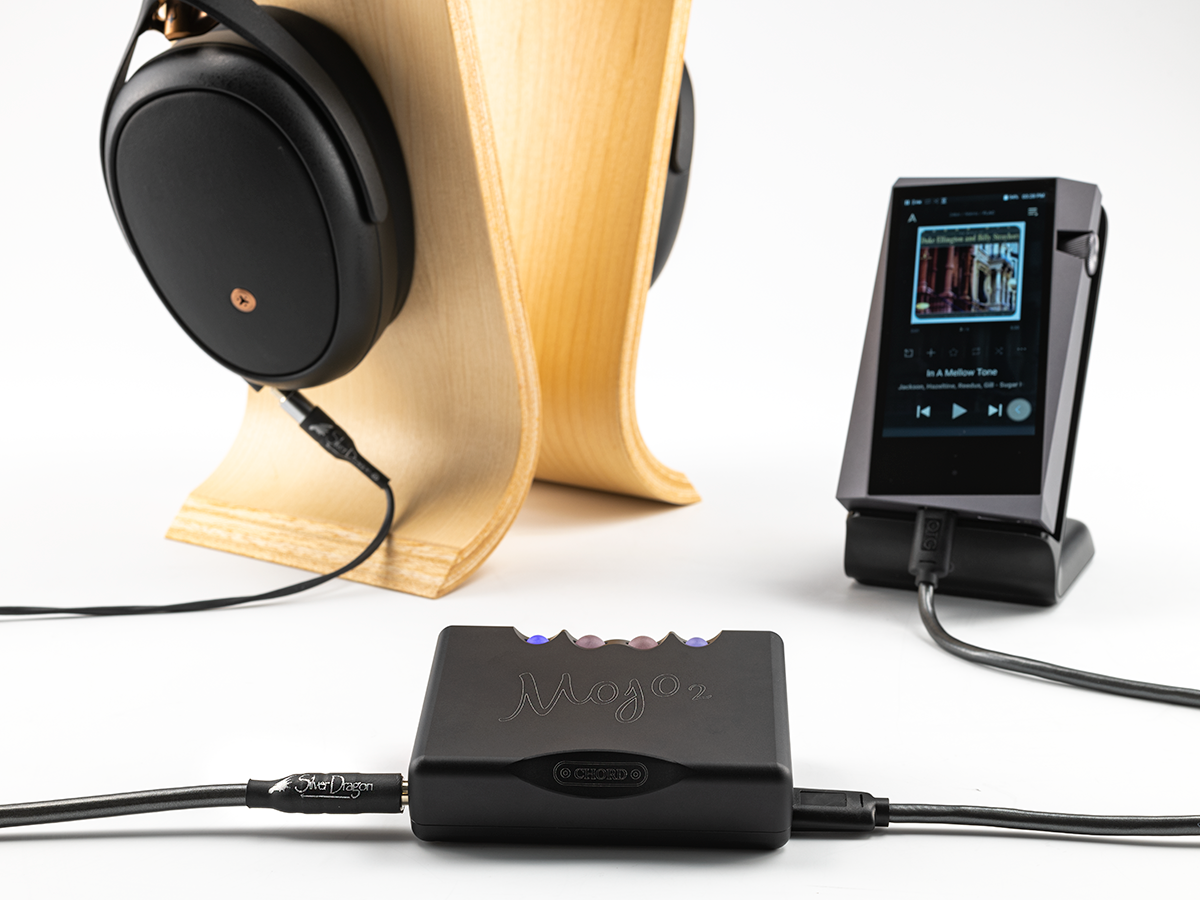
Chord Electronics
Mojo 2 DAC Headphone Amp
$650.00 USD
Features
Additional USB-C data input for fast data transfer
Fully transparent 'Ultra HD' digital signal processing EQ, tailoring the sound to you
Improved battery: FPGA-controlled management plus improved capacity
New Menu Functions
'UHD' DSP: advanced EQ adjustment for headphones, file formats, and personal taste
Improved WTA filtering: 40 DSP cores for better transparency and lower noise
High-speed USB-C input
Two 3.5 mm headphone outputs
Wireless-ready - simply add the Poly streamer/server
Proudly made in Britain from aircraft-grade aluminum. Anodized, bead-blasted, precision CNC milled. Jett black finish.
Video
What's in the Box?
Warranty
The Chord Mojo 2 is the most advanced DAC/headphone amplifier in the world. It plays your favorite music with class-leading detail and clarity, right up to studio-grade levels. The Mojo 2 builds upon the original Mojo by Rob Watts and makes some substantial improvements in the overall functionality of the portable DAC. The new Mojo retains a lot of what made the Mojo 1 popular: dual headphone jacks, amazing build quality, control spheres, great battery life, and a soundstage and tone that few could compete with. The Chord Electronics Mojo 2 adds additional functionality, including enhanced tone controls, a revamped menu system, high-end sound specs, and low and high gain volume control. The Mojo 2 is the perfect portable DAC amp for almost every headphone and IEM on the market.
The Chord Electronics Mojo 2 is the new king of portable DAC Amps that every audiophile should have in their system. It improves on the original in every way possible. Easily improve the sound fidelity from streaming services like Spotify, Tidal, and Qobuz, the Mojo 2’s tone control can make lossy and lossless audio sound much better than your consumer-grade devices. Chord’s internal noise-shaper allows the EQ to work linearly below 104 bits, and the more extensive controls allow for much more nuancing of treble, high treble, mids, and lows than before. Battery management has improved with the new desktop mode. The Mojo was already the best. Now it’s just better.
Dragon Cable Recommendation: The Silver Dragon USB Cable is our best-selling cable at Moon Audio and the perfect companion for the Mojo 2. The Silver Dragon USB transfers digital audio from a computer or portable device such as a Phone, Tablet, or DAP (digital audio Player) to a USB-capable DAC. Also consider the popular Silver Dragon Toslink Digital Cable for the Mojo 2.
Also consider the popular Silver Dragon Toslink Digital Cable for the Mojo 2.
CHORD MOJO 2 IS A DAC AND HEADPHONE AMP
The British designed, engineered, and built Mojo 2 is distinctly different from all other devices, Mojo 2 uses proprietary British digital audio technology perfected over more than two decades, coupled to a powerful ‘FPGA’ processor. The result is class-leading sound quality both on the move or at home, with the power to effortlessly drive any headphones. For music just as the artist intended, Mojo 2 brings you closer to the music than any other portable.
MORE FEATURES, MORE CONTROL, & BETTER SOUND

Unrivaled digital audio processing; powerful 'FPGA' technology

Additional USB-C data input for fast data transfer

Fully transparent 'Ultra HD' digital signal processing EQ, tailoring the sound to you

Take Mojo 2 wireless when adding the Poly streamer/server (2 TB)
Proudly made in Britain from aircraft-grade aluminum. Anodized, bead-blasted, precision CNC milled. Jett black finish.
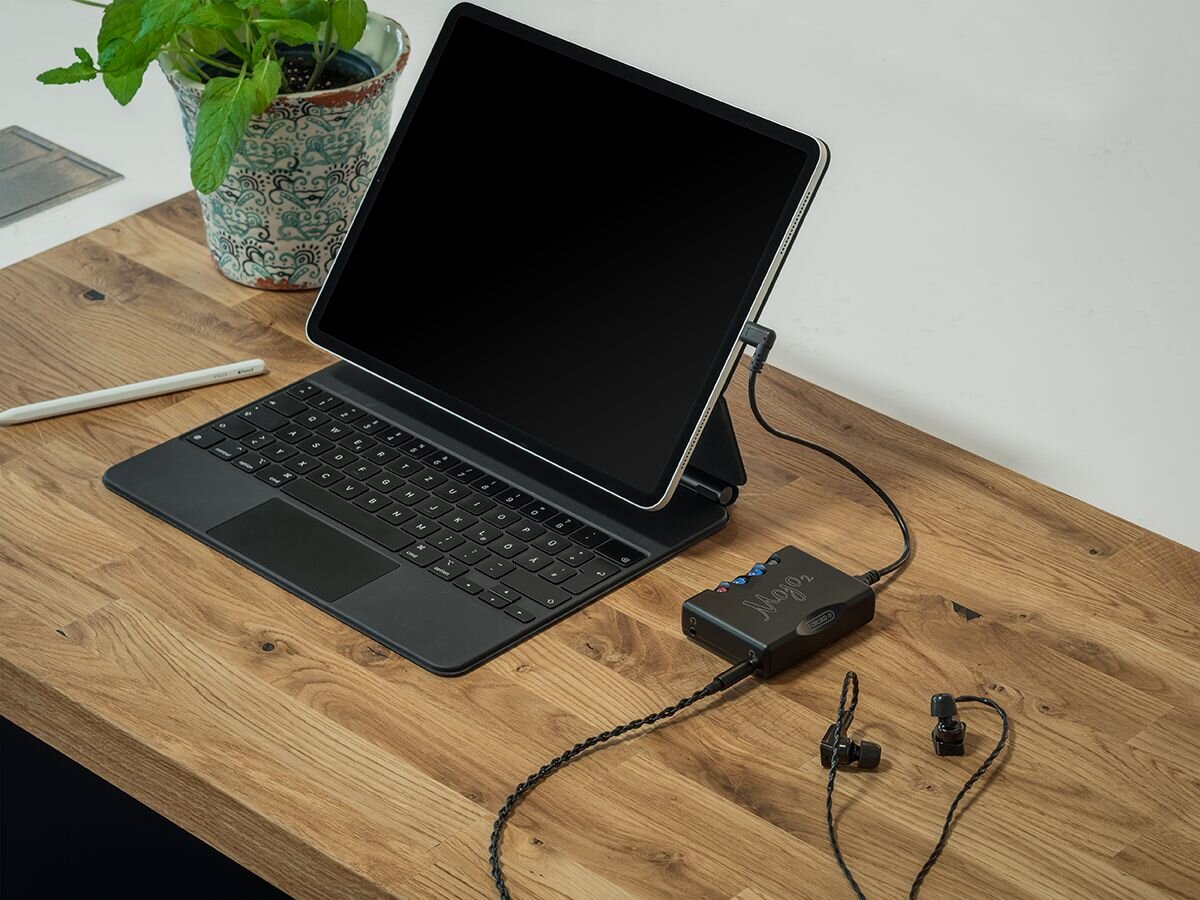
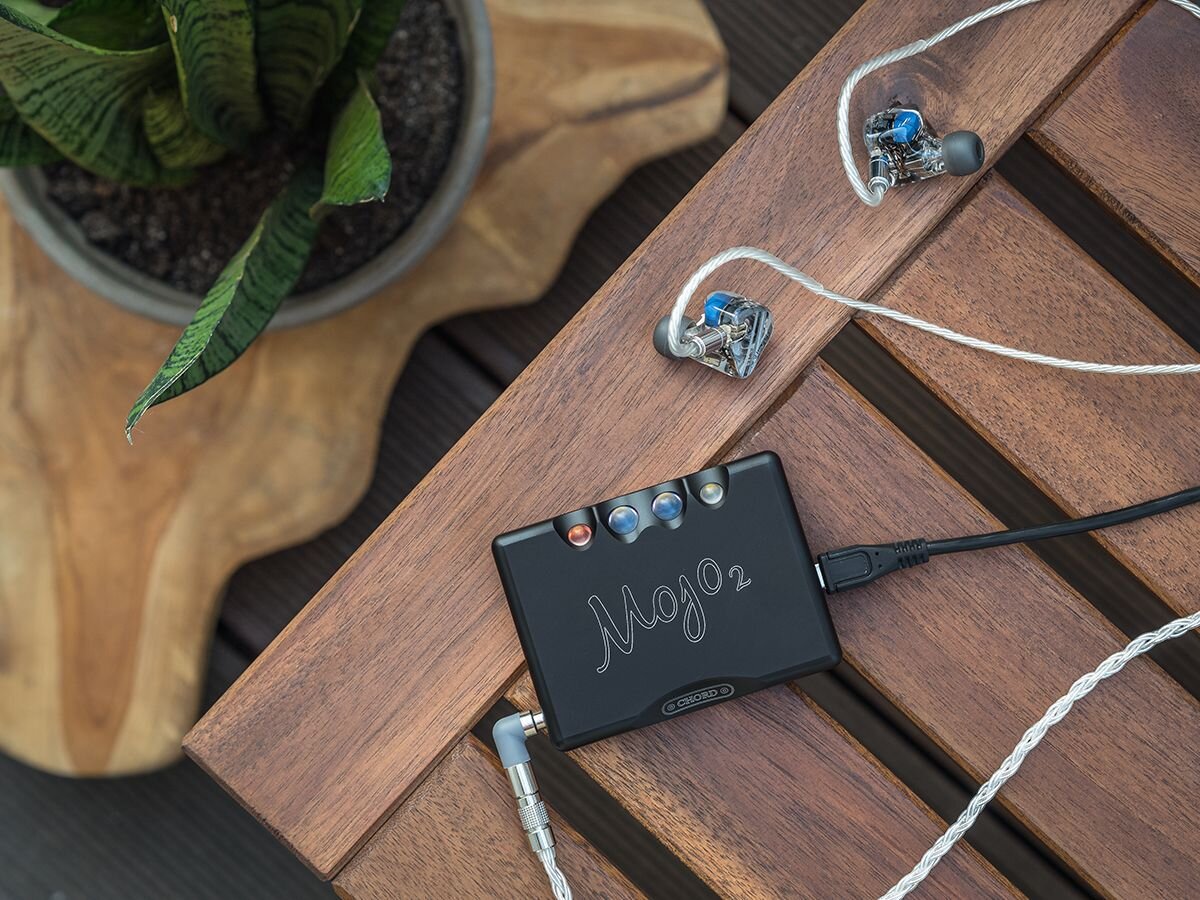
IMPROVED & UNIQUE FPGA TECHNOLOGY ONLY FROM CHORD
For more than 20 years, Chord Electronics has exclusively used powerful programmable (FPGA) circuits with custom coding to provide the most advanced digital-to-analog conversion performance in the world. With digital audio technologies perfected over two decades, Mojo 2 contains more digital audio know-how than any other small DAC, resulting in unrivaed sound quality, all backed by peerless technical measurements from the lab.
CHORD ELECTRONICS MOJO 2 IS COMPATIBLE WITH THE POLY STREAMER
Completely compatible with our Wireless streaming module Poly, Poly allows for wireless integration into your system.


Mojo 2 offers several ways to connect to digital devices, including smartphones, tablets, and laptops, plus two 3.5 mm headphone outputs, meaning two can listen simultaneously. Digital inputs include fast-transfer USB-C, Micro-USB, optical, and coaxial, with charging via a separate dedicated Micro-USB input. Mojo polychromatic light-up buttons offer simple control with an additional visual guide to the device’s settings. A new menu button offers navigation through a new range of features, including the all-important completely transparent UHD DSP function.
Mojo 2 brings exciting new features for music lovers.

Improved FPGA: more resolution, power, and efficiency

Improved battery: FPGA-controlled management plus improved capacity

New menu function

'UHD' DSP: advanced EQ adjustment for headphones, file formats, and personal taste

Improved WTA filtering: 40 DSP cores for better transparency and lower noise

High-speed USB-C input

Two 3.5 mm headphone outputs

Wireless-ready - simply add the Poly streamer/server
Next-generation FPGA-based portable DAC/headphone amplifier with advanced proprietary technology. Builds on the multi-award-winning Mojo and adds exciting new features plus improved performance. The class-leading custom-coded programmable chipset offers unrivalled technical performance and peerless sound quality. New menu feature with advanced UHD DSP, plus five digital inputs including USB-C. Wireless compatible via Poly.
Five digital inputs: coax, dual-data coax, optical, Micro-USB and (new) USB-C Two 3.5 mm headphone outputs for shared listening/headphone comparison Wireless-ready for the Poly streamer/server
New USB-C input New: world’s most advanced UHD DSP; advanced EQ adjustment New menu function incl. crossfeed, button lock, brightness and DSP Improved FPGA: greater resolution, power and efficiency Improved battery: larger capacity and intelligent desktop mode (derived from Hugo2) Improved WTA filtering: 40 DSP cores for better transparency and lower noise Full compatibility with Poly 1-year warranty
FAQ
Does the Chord Mojo Support MQA?
The Chord Mojo 2 is not MQA-certified.
Is the Chord Mojo a Headphone Amp?
Yes, the Chord mojo 2 can provide up to 4.2Vrms (90 mW 300ohms) or 5.2Vrms (600 mW 30ohms). It can provide enough power for most full-size headphones and in some cases two headphones simultaneously (depending on power ratings).
How Do You Use The Mojo 2?
The Mojo 2 is a portable headphone amplifier and DAC. You connect it to your source device like a phone or computer, allowing you to have much better audio quality than the phone or computer itself. Connect the Mojo 2 to your device using a compatible cable depending on you port selection. The Mojo 2 should, in most cases, be automatically recognized and redirect the audio through the Mojo 2 to your connected headphones.
What Does the Chord Mojo 2 Do?
The Mojo 2 is a portable headphone amplifier and DAC. The amplifier section provides power to your headphones, much more output and headroom than your phone or computer can output. The digital-to-analog section does just that: converts your digital data to an analog signal so that it can be outputted as an analog wave to your headphones for music listening. To learn more about how DACs work, head over to our "What is a DAC?" guide. You'll have much better sound quality using your Mojo 2 than you will direct from your phone, tablet, or computer.
Does the Chord Poly work with the Mojo 2?
Yes, since the Chord Mojo 2 has the same footprint as the original Mojo and the same connections, the Chord Poly will work in the exact same way. Simply connect the Ply to the Mojo 2 like you would with the Mojo 1.
What Does the Chord Poly Do?
When connected to the Chord Mojo digital to analog converter (DAC) the Poly is a “fully fledged” high-resolution wireless network music player, streamer, SD card playback device with high-resolution wireless playback controlled by your smartphone. The Poly connects seamlessly to the Mojo and Mojo 2, with precision design the two devices act like one when connected. It works with both the Mojo 1 and 2, and makes a great addition to your portable HiFi setup. Head over to the product page to learn more about the Chord Poly Wireless Streaming Module for Mojo.
Do I Really Need a DAC?
DAC’s are one of the easiest ways to improve the quality of your music. Unless your streamer or all-in-one already has a high-end digital-to-analog converter, you do not necessarily need a standalone DAC. Some people prefer the sound of a particular DAC and may even use it in conjunction with their all-in-one units.
Does a DAC Improve Sound?
Yes, if you are connecting your Mojo 2 DAC to a consumer device like a smartphone or laptop, you will experience a superior music listening experience. The DAC is made to convert your digital data to an analog signal much more efficiently than your consumer device.
Will a DAC Improve Spotify or Music Streaming Services?
A DAC certainly will improve the overall quality of the music you are streaming from your source device. Another factor that can improve your streaming experience is to make sure you are streaming your music at the highest possible fidelity. Many streaming services offer a number of sound quality options based on your data consumption, and whereas high-resolution audio uses the most data, it will also offer the best sound quality.
Does the Chord Mojo 2 Support DSD?
Yes, up to DSD256.
How Do I Know If I Need a DAC or An Amp?
In most cases, devices like the Chord Mojo 2 will come with both. There are standalone DACs and AMPs, however, and in every case, you will need both to listen to music. Now consumer devices like smartphones and laptops have both, but they are never up to audiophile quality. Having a high-end DAC will allow your music to sound better, more dynamic, and more resolute. Typically, an amplifier is needed when you do not have enough power from your source device to power your headphones or speakers. In the case of some headphones, you will need extra power to make sure they are driven optimally. Oftentimes, a DAC and amplifier are used when your source device, like an iPhone, does not have a headphone jack. If you have easy-to-drive headphones, then in most cases a standalone DAC will be sufficient for music listening. As always, Contact Us if you have any questions.
How Do I Charge My Chord Mojo 2?
Use the included charging cable in your packaging to connect the Mojo 2 to a USB-powered source. Connect the micro-B connector to the port on the Mojo 2 with the battery icon to charge.
How Many Taps Does the Mojo 2 Have?
The Mojo 2 has 40,960 tap filters.
How Do I Connect My Mojo 2 To My Phone?
If you have an iPhone you will need to connect the Mojo 2 via the USB cable and a proprietary CCK adapter from Apple. If you have an Android phone, then a USB-C to USB-C cable will work for data transfer or a USB-C to a micro-B cable (depending on your connector type).
Why Is My Network/Status Flashing Yellow?
Poly cannot detect a connected MOJO/MOJO 2. Please ensure that your MOJO/MOJO 2 is switched on and connected.
Why is There No USB-C Fast Charging?
Implementing a charge function into the USB-C port would cause unwanted noise, which does not align with Chord’s philosophy of product design. Secondly, USB fast charging causes unavoidable damage to lithium cells. This is not appropriate for a product with an intended lifespan of above 3+ years.
Why Has Chord Continued to Use A Micro-USB Charge Input?
Chord has continued the previous layout of Micro-USB inputs on Mojo2 in order to maintain compatibility with the Poly streaming device. Many customers have invested in our streaming products and we will continue to support and develop them.
Balanced Headphone Output: Why Isn't One Included?
Single-ended is innately more transparent than balanced as it’s simpler. Secondly, pulse array DACs are single-ended, so going balanced would make it sound worse. Conventional DACs are balanced to solve substrate noise, but the pulse array is discrete so doesn’t have this problem in the first place.
Apple iPhone/iPad Connection: What Do I Need?
To connect an Apple iPhone or iPad to Mojo 2, use a (genuine) Apple Lightning to USB adaptor (camera connection kit), connecting a suitable USB to Micro-USB or USB to USB-C to attach to the Mojo 2.
Output Stage: Have There Been Any Changes?
No, the analog OPs are the same. The biggest change on the analog side has been removing the coupling capacitor, which has tightened the bass with an extended definition.
Taps/Filters: How Many Does the Mojo 2 Have?
The original Mojo was 38,912 taps, Mojo 2 is 40,960. Not a huge change, but the filter core is upgraded to current standards, which is a larger change than the taps; there is more to our WTA filters than taps.
Battery-Free Operation: How is This Done Without Losses In Sound Quality?
On the original Mojo, the amplifier was fed by the battery directly. Now, it is fed by regulators, ensuring low PSU noise. We can see the benefit in that crosstalk (noise that came from the PSU) is considerably better with Mojo 2 at 118 dB.
Battery: What Type of Rechargeable Battery Is Fitted? Is It the Same As Mojo (1)?
It’s similar to Mojo, but benefits from a higher capacity.
Line-Level Mode: How To Access It
The line-level mode has been removed for safety; Chord had a few cases of customers inadvertently activating it when switching Mojo on. They have decided to remove it and make it a user-conscious event now, so by manually having to increase the volume, it’s easier to understand/remember it has been done. Mojo 2 still remembers volume setting afterward, so if you want to use it as a line-level DAC, you don’t need to set it every time.
Does the Mojo 2 work with the Original Poly?
Yes, The Mojo 2 still works with the original Poly. If you already have the Poly you are good to go!
Can you leave the Mojo 2 plugged into a power source while using?
Yes, now with the 2nd edition of the Mojo it will automatically enter into desktop mode after sitting at full charge for around 2 hours to initialize. When the battery light glows purple it is in desktop mode.
Is the Mojo 2 Battery Replaceable?
The Mojo 2 battery is not readily replaceable by the owners. If your Mojo 2 is having battery issues it can be sent back to us and we can replace the battery for you.
How do you know when the Mojo 2 is finished charging?
When the charging LED glows solid blue, that is when the unit is finished charging.
What does the M button on the Mojo 2 do?
The new (M) button on the Mojo 2 is the Mode button which lets you change through a variety of options on how you want to control the unit. More on this can be found in our product manual on the Mojo 2 product page.
Does the Mojo 2 have different Gain Stages
Yes, the Mojo 2 goes through two different gain stages. When the “Mode button” glows white when adjusting the volume/listening to music you are listening to the “High Gain” mode. When the mode button is a dim gray it is in “Low Gain” mode. As you adjust the volume the different gain modes will automatically change.
| Parameter | Specification |
|---|---|
| Technical Specifications | |
| Digital Inputs | Five digital inputs: coaxial, dual-data coax, optical, Micro-USB, and USB-C |
| Dynamic Range | 125.7 dB A-weighted |
| Noise | 2.7 µV A-weighted, no measurable noise floor modulation |
| Audio Specifications | |
| Distortion and Noise | 0.00027 % at 2.5 V, 300 Ω |
| Power Output (1% Distortion) |
90 mW @ 300 Ω (5.2 V RMS) 600 mW @ 30 Ω (4.2 V RMS) |
| Output Impedance | 0.06 Ω |
| Stereo Separation | 118 dB @ 1 kHz, 300 Ω, 2.5 V |







